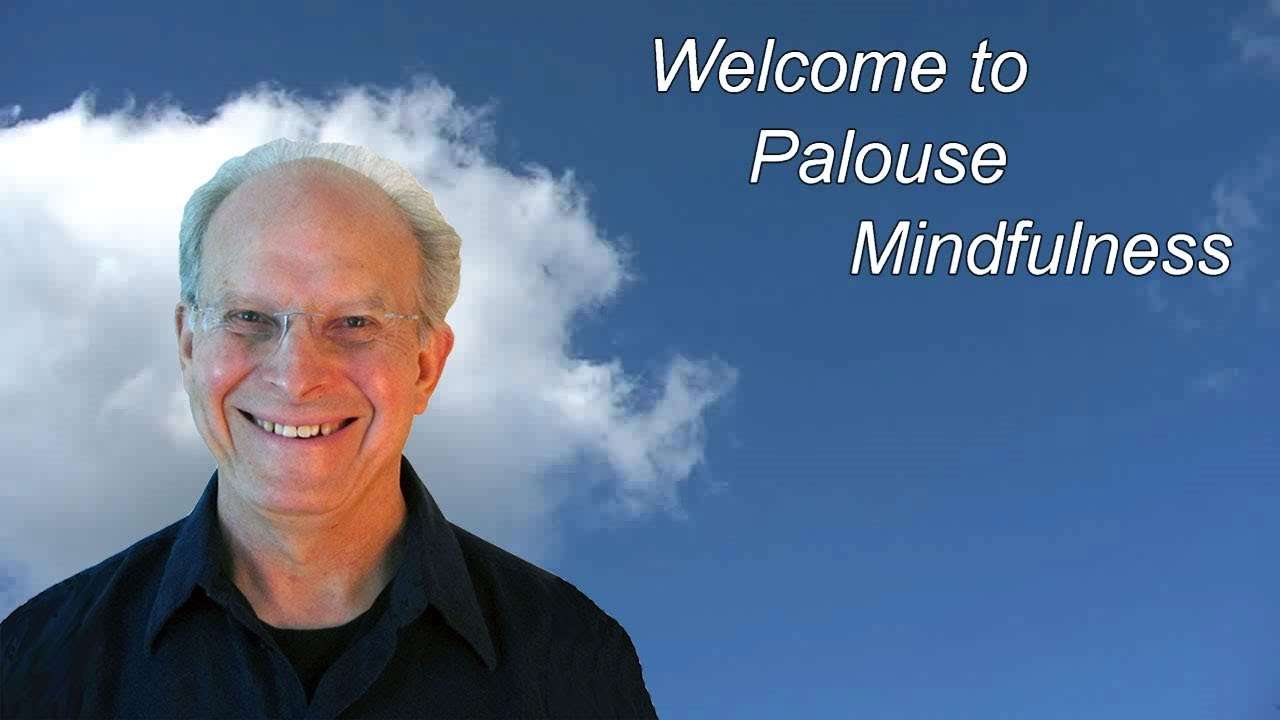Dr. Roy Barsness is the founder of the Relationally Focused Psychodynamic Therapy, an evidence-based treatment approach with strong roots in depth psychology, embodied theology, dialogical philosophy, and neuroscience. He has also developed a Post-Graduate Certificate through The Seattle School where clinicians are able to deepen their understanding and application of relational psychotherapy over a two-year training period.
Here, Dr. Barsness takes a deep-dive into the origins and elements of Relationally Focused Psychodynamic Therapy, its core foundations, its connection to interpersonal neurobiology, and the specific practices of relationally focused therapists.
Relationally Focused Psychodynamic Therapy (RFPT) is a method of treatment grounded in depth psychology (particularly contemporary relational psychoanalysis), interpersonal neurobiology, the dialogical philosophy of Martin Buber, and the sacredness of the person and of the therapeutic act.
RFPT is also an evidenced-based psychotherapy modality focused on transformational change through relationship. We hold to an understanding that we are conceived in relationship, formed in relationship, harmed in relationship, and transformed through relationship. The treatment method is designed to deepen a psychotherapist’s capacity to work directly within the therapeutic relationship as the primary means of change and to develop theoretical and practical skills in the delivery of a relationally-focused treatment.
Origins of Relationally-Focused Psychodynamic Therapy
Relationally Focused Psychodynamic Therapy is as much a meta-theory or method as it is a model, evolving from a wide range of psychoanalytic ideas and theories while offering structure and flexibility in practice.
Relational Psychoanalysis is a movement that began in the 1980s. At that time, a group of psychoanalysts from the NYU post-doctoral program in Psychotherapy and Psychoanalysis launched what they termed a “radical alternative” to the one-person drive theory posited by earlier theoreticians (Freud, Klein, Winnicott, Kernberg, Kohut) to a two-person psychology that emphasized the dyadic, dynamic flow of the therapeutic relationship.
With the understanding that we are shaped interpersonally and that psychopathology is characterized by maladaptive, relational configurations, fundamental to relational psychoanalysis is the power of working intersubjectively – that is directly within the experience of the therapist/patient relationship. Relational psychoanalyst’s basic premise is that human beings are born with a primary need of relatedness and that relatedness is necessary for survival. Relatedness is the primary organizer of mental life. RFPT practices are based on relational psychoanalytic theories and on a qualitative research study conducted in 2017 that resulted in seven core disciplines. These seven disciplines are representative of common practices among relational analysts in conducting a psychodynamic treatment.
The Connection Between RFPT and Interpersonal Neurobiology
Working from a relationally psychodynamic perspective is also informed by interpersonal neurobiology research that explores the effect that relationships (including therapeutic) has on the brain and affect regulation. Researcher Alan Schore states that “regulation theory dictates that in ‘heightened’ affective moments, the patient’s unconscious internal working model of attachment, whether secure or insecure, is reactivated in right-lateralized implicitly-procedural memory and re-enacted in the psychotherapeutic relationships.”
Disruptions to the continuity, presence, and availability of primary caregivers plays a central role in psychoneuropathogenesis. Thus, interpersonal relations are the building blocks of the mind, determining our attitudes, perceptions, reactions, our feelings, essentially what we might call “our-selves.” Affective states between the right-brains of the patient and the therapist are best described as intersubjectivity. Right brain processes are reciprocally activated within the therapeutic alliance, are most often unconscious and are “felt” before they are thought.
Working from this perspective creates relational conflict/dissonance and it is the working through of the inevitable ruptures, interlocks, and enactments that shifts the chemistry of the brain. Alan Schore says, “Emotions are deepened in intensity and sustained in time when they are intersubjectively shared [occurring] in moments of deep contact.” Strachey’s translation of Freud’s die seele (soul) to mind, removed the essence of Freud’s intent. The translation sucked the “soul” out of psychology, replacing it with an emphasis on the intellect/the mind.
What has been lost is an understanding of the soul as the spirit of life, the energy that animates us toward the other, the fervor in which we approach our lives. Jungian analyst James Hillman 4 describes the soul as that aspect of the human person which makes meaning possible, [deepens] events into experiences, is communicated in love, and has a religious concern. Perhaps Hillmans’ reference to religious concerns is a nod to the steadfast discernment of the soul as the central moral force embedded deep within a person. Though religion has done its own violence to the meaning of the soul, ultimately both psychodynamic therapy and religion have a shared teleology. Psychodynamic therapies, laboring in the realm of the soul, (whether it is acknowledged or not), are always bumping up against the sacred. Both seek meaning, depth, and purpose. Both in their own forms of confession, forgiveness, and reconciliation, seek to transform the barriers blocking a vital life of love and care for oneself and of the other.
Interpersonal neurobiology can now “track” the power of the human connection and the transformation that occurs when two lives intersect with the other. This intersection is transacted ”when people enter dynamic solidarity with one another…and this deep bonding is contained neither in one, nor the other, nor in the sum of both, but becomes present between them…through directness and wholeness, will and grace, and the presence of mutuality.” Jürgen Moltmann, a well-known systematic theologian, refers to this meeting as the “intimate indwelling and complete interpenetration of the persons in one another…and that by their eternal love, the divine person exists so intimately with one another, for one another and in one another that they constitute themselves in their unique, incomparable and complete unity.”
Practices of a Relationally Focused Therapist
In these deep moments of psychological contact, we are on the threshold of the sacred. Relational psychoanalysis, current research conducted in interpersonal neurobiology, the sacred texts of religion and the philosophy of Martin Buber, direct the RFPT mind towards the potency of assisting our patients towards health and well-being. Each advances the notion of therapeutic change through the act of authenticity. By paying attention to affective states, unconscious arousals, and replications within the therapeutic encounter, the patient’s internal world is reexperienced and reimagined.
No two therapists work in the same fashion and, given the uniqueness of each relationship and the working through of what happens in that relationship, it must be so. These are universal practices that can serve as a helpful “map” for conducting our practices while acknowledging and appreciating the intuitive, organic nature of our work, including:
- How we position ourselves (therapeutic intent and therapeutic stance)
- How we reflect (deep listening)
- Attending to the there and then/here and now (patterning/linking)
- How we engage (repetition/working through and courageous speech/disciplined spontaneity)
These primary influencers of relationally-focused psychodynamic work are intended to deepen a psychotherapist’s capacity to work directly within the therapeutic dyad, understanding the therapeutic relationship as the primary instrument towards change.
Learn more about the Relationally-Focused Psychodynamic Therapy Post-Graduate Certificate here.
References
Certain ways of my own being have proven to move therapy into a more genuine, open and emotional experience for my patients and myself. The more that people feel that they can let themselves go and be vulnerable with another person yet still feel safe, the better their overall emotional and relational functioning outside of therapy.
Inevitably, for better or worse, my intuition has ultimately been a guiding force in my therapeutic decision-making and practice. Another major contributor to change, which is not independent of any other factor, is my own desire for therapy to be meaningful or my own emotional connection to the patient. Extant clinical experience and empirical research substantiate the notion that when the therapist really cares about the patient and has a warm, caring attitude towards them, the patient shows a lot of improvement from therapy. The converse is also true, i.e., if the patient is detached and disinterested, the therapy will likely be a challenge.
Therapy Goals
It seems likely that when most people think of therapeutic change, they think of a reduction of psychiatric symptoms, improved internal representations of self, other, and relationships. They may also think of healthier and more satisfying interpersonal and romantic relationships as well as better emotional functioning and perhaps greater self-awareness and insight.
Knowledge of self can equip one to better deal with the problems of everyday life. Spinoza long foreshadowed psychoanalysis when he highlighted the power of insight when writing his book, Ethics: “Emotion, which is suffering, ceases to be suffering as soon as we form a clear and precise picture of it.”
All of these domains of change are interrelated and therefore it is not necessary to consider differential theory and technique for each domain, unless one specific area of the patient’s functioning is impaired and affecting the patient’s life overall or if there are presenting psychiatric symptoms that require immediate attention. In these latter cases, specific interventions should be utilized to address the patient’s immediate treatment needs.
Other Considerations
It is also important to point out that sometimes people get worse before they get better in therapy and this has implications for any theory of therapeutic change. Sometimes when a patient acts out, it can be indicative of progress on one level but problematic in some other area. It is difficult to know if short-term or immediate therapeutic gains are genuine and will translate into long term gains or if the gains mean something different for the patient, therapist, and progress of therapy, respectively.
It is conceivable that based on a patient’s past experiences, personality, and life history, the appearance of improvement may be a negative prognostic indicator. All of these complexities need to be considered for a theory of therapeutic change.
Factors Contributing to Therapeutic Change
In my view, there is no one size fits all model of therapeutic change factors (and there should not be). Every patient-therapist dyad is unique and influenced by who the therapist is as a person just as much as who the patient is as a person as well as the nature of their relationship.
Furthermore, patients have their own needs and weaknesses that require unique therapeutic approaches to address their unique struggles in the context of their past experiences and prior relationships. Mahoney (1989) sums it up beautifully: “Human helping is an abstractly principled interpersonal process that is highly individualized and infinitely unique.”
Based on my clinical experience, five primary mechanisms of change in therapy are:
- the transference-countertransference matrix,
- emotional experiencing/affect expression and tolerance,
- internalization/learning of adaptive coping strategies and skills,
- holding environment/new relational experience is corrective, and
- insight.
Prior research has found a set of factors that contribute to positive therapeutic change regardless of the particular type of therapy. I discussed some of these common factors at the beginning of this piece by highlighting the importance of building a warm, supportive therapeutic alliance as well as the importance of therapist beliefs (also patient expectations) that the therapy will work. In sum, important common factors include:
- the therapeutic relationship, namely how the patient feels about the therapist and how the therapist feels about the patient (transference – countertransference),
- who the therapist is as a person, namely their capacity to sit with and tolerate intense emotional experience, including sadness,
- skillful use of specific techniques, and
- empathy.
While the common factors just described are not identical to the five factors contributing to therapeutic change, I elucidated just prior, they hopefully overlap. A broadly-based psychodynamic-relational perspective is a good way to describe my approach and theory of factors of therapeutic change in the context of the need for the field of psychotherapy to label everything.
Stay tuned for future articles that elaborate and clarify my theory of factors contributing to therapeutic change as well as possibly illustrative case examples.




